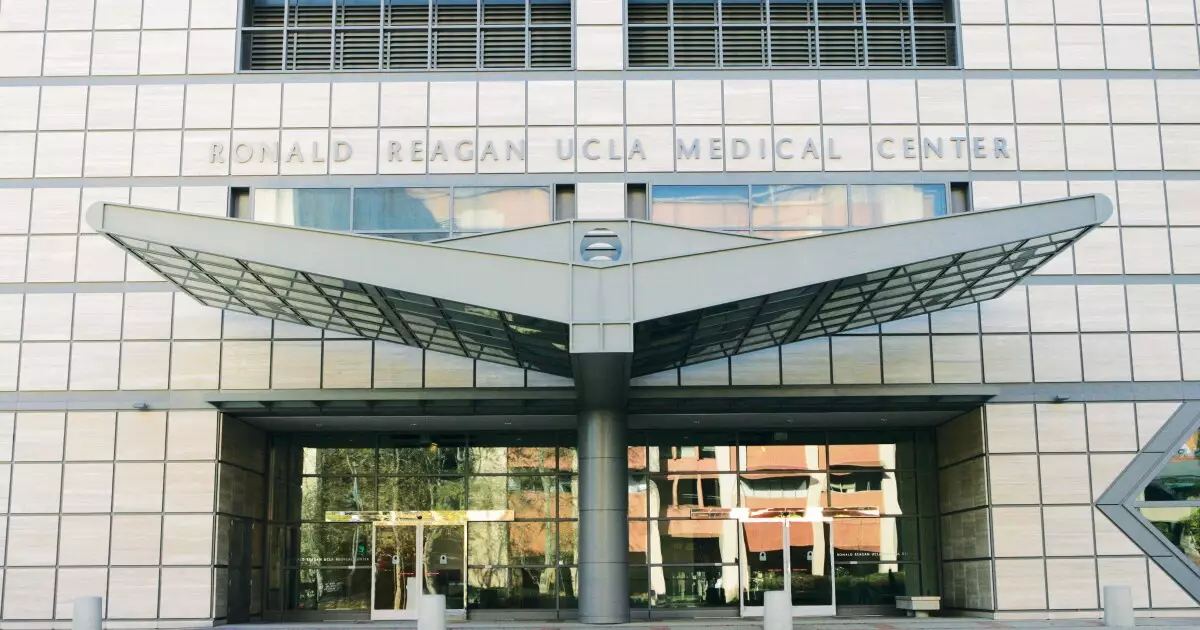In recent debates over the federal budget, a troubling pattern has emerged—massive cuts to Medicaid threaten to destabilize the very foundation of our higher education system. While policymakers often tout budget reductions as fiscal responsibility, their reverberations extend far beyond the immediate savings. The cuts, projected to reduce Medicaid spending by almost a trillion dollars over the next decade, are poised to inflict long-lasting damage on university hospitals and medical schools that serve low-income populations. This isn’t just about healthcare; it’s about the erosion of an entire sector that is pivotal to medical advancement, community health, and economic stability.
Academic medical centers such as the University of California Health System will bear the brunt of these reductions. With Medicaid making up a significant share of their patient care revenue—up to 41% at UC hospitals—the financial shockwaves will be undeniable. The ripple effect could force universities to cut back on essential medical research, healthcare services, and educational programs. Such losses threaten to diminish California’s reputation as a leader in medical innovation and public health. Moreover, these cuts set a dangerous precedent, signaling a callous disregard for the healthcare needs of vulnerable populations, and consequently, a retreat from the social responsibility that universities have historically championed.
State Funding and the Broader Educational Crisis
Federal Medicaid cuts are only part of a broader, more insidious trend—shrinking state contributions to higher education budgets. Historically, state funding provided a vital lifeline for public universities, enabling access and affordability for millions of students. However, the gradual decline in state support—recently down to a mere 1-2% growth—compounds the financial strain caused by federal policies. Universities now confront a double whammy: less federal aid combined with dwindling state resources.
This convergence of austerity measures leads to a deleterious impact on enrollment, affordability, and quality. It creates a hostile environment where institutions are forced to board the austerity train, cutting programs, laying off staff, and delaying infrastructure investments. The predictable consequence? A stratified system where only the wealthiest or most privileged can afford higher education. This undermines social mobility and the very premise of accessible education that, in theory, is a bedrock of American meritocracy.
The California State University system, which relies heavily on state funding—around 40%—will feel these effects acutely. While the University of California system, more diversified through revenue sources like patient care, retains some resilience, it is not immune. The threat is systemic, looming large over the entire public university infrastructure. If federal reductions force states to tighten their belts further, the only recourse will be harsher cuts, reducing the number of available seats, research grants, and faculty support.
The Financial Strain on Higher Education Bonds and Endowments
Financial markets, savvy and cautious, have already started reacting to these looming threats. Demand for new bonds issued by universities is waning, and spreads are widening—an unmistakable sign that investors are wary of sector stability. For the UC system, which carries a substantial debt load—totaling around $30.5 billion—bond ratings reflect the mounting concerns. Although most bonds still hold stable outlooks, the precursors of trouble are evident.
Particularly troubling is the increasing financial pressure on private and wealthy institutions. A recent policy change imposes an 8% excise tax on large endowments above $2 million per student, drastically altering the fiscal landscape for elite private schools like Harvard and Yale. While these universities might absorb the new taxes more easily, it sharply raises questions about the sustainability of their immense endowments and their charitable status, especially as political rhetoric increasingly targets them as symbols of inequality.
This tumult in the financial markets underscores a fundamental truth: the sector’s stability as a whole hinges on federal and state policy choices. When the federal government targets social programs and slaps additional taxes on endowments, the ripple effects threaten to destabilize university finances further. The perception of risk among investors may tighten, leading to higher borrowing costs and less capital for expansion and innovation.
The Political and Ideological Implications
At its core, these budget cuts are not merely fiscal decisions—they reflect a deeper ideological shift that underestimates the importance of public investment in education and health. From a center-right perspective, responsible governance involves prioritizing fiscal sustainability without sacrificing essential services. Slashing Medicaid and public university support creates a paradox: governments talk about economic growth, yet lay the groundwork for a talent drain, innovation decline, and widening inequality.
The rising taxes on endowments—aimed ostensibly at making the wealthy pay their fair share—may have unintended consequences. They risk curtailing the philanthropic spirit that has historically fueled university excellence. Moreover, the threat to research funding and federal student loans signals a retreat from the principles of individual opportunity and enterprise, favoring short-term austerity at the expense of long-term growth.
In this climate, universities are pushed into a corner where their core missions—teaching, research, and community service—are jeopardized. The very institutions that drive national progress could become stagnant, less innovative, and increasingly disconnected from the broad societal needs. If policymakers continue down this path, higher education risks becoming a privilege rather than a right, perpetuating existing inequalities and hampering America’s global competitiveness.


Leave a Reply